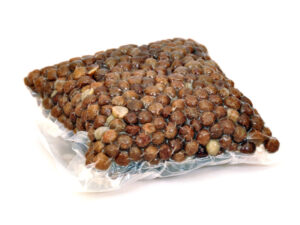Vacuum packaging has come a long way since its inception, and it continues to evolve in response to changing consumer preferences, technological advancements, and sustainability concerns. The future of vacuum packaging holds exciting possibilities that can impact various industries in significant ways. Here are some trends and predictions for the evolution of vacuum packaging technology:
1. Smart Packaging Solutions
In the coming years, we can expect to see vacuum packaging become smarter and more interactive. Smart packaging may include features such as QR codes or NFC tags that allow consumers to access product information, track freshness, and receive cooking instructions through their smartphones. This technology will enhance the user experience and provide valuable data to manufacturers.
2. Sustainable Materials
Sustainability is a growing concern in packaging, and vacuum packaging is no exception. Future trends will likely include the adoption of sustainable materials, such as bio-based plastics, recyclable films, and compostable options. Manufacturers will prioritize eco-friendly packaging to reduce their environmental footprint.
3. Extended Shelf Life
Advancements in vacuum packaging technology will lead to even longer shelf lives for a wide range of products, including perishable foods, pharmaceuticals, and electronics. This will help reduce food waste, improve product safety, and enhance the convenience of ready-to-eat meals and snacks.
 4. Advanced Barrier Films
4. Advanced Barrier Films
Vacuum packaging will continue to benefit from the development of high-performance barrier films. These films will provide better protection against oxygen, moisture, and external contaminants, ensuring the freshness and quality of products over extended periods. This will be especially important for products with long shelf lives.
5. Customization and Personalization
Customized vacuum packaging solutions will become more prevalent. Manufacturers will have the ability to tailor packaging sizes, shapes, and designs to meet the specific needs and preferences of their customers. Personalized packaging can enhance brand loyalty and customer engagement.
6. Food Safety and Traceability
Enhanced food safety measures will be integrated into vacuum packaging technology. This includes features like tamper-evident seals, anti-counterfeiting measures, and improved traceability systems. Consumers will have greater confidence in the safety and authenticity of packaged products.
7. Reduced Packaging Waste
Vacuum packaging will play a role in reducing overall packaging waste. Advances in materials and design will lead to thinner, more efficient packaging that generates less waste. Additionally, sustainable disposal options, such as biodegradable films, will become more widely available.
 8. Cross-Industry Applications
8. Cross-Industry Applications
The benefits of vacuum packaging will extend beyond the food industry. We can expect to see its adoption in pharmaceuticals, electronics, and other sectors where product protection and shelf life extension are critical. For instance, vacuum-sealed packages can help preserve the potency of pharmaceutical drugs.
9. E-commerce Integration
With the continued growth of e-commerce, vacuum packaging will be tailored to meet the unique requirements of online retail. Packaging designs will focus on product protection during shipping while minimizing excess packaging materials to reduce shipping costs and environmental impact.
10. Consumer Education
As vacuum packaging technology becomes more sophisticated, consumer education will be essential. Manufacturers will need to provide clear instructions on how to handle, open, and dispose of vacuum-sealed products. Consumer awareness of the benefits and proper usage of vacuum packaging will be crucial.
In conclusion, the future of vacuum packaging holds promise for more sustainable, efficient, and consumer-friendly solutions. As technology continues to advance, the impact of vacuum packaging will extend across industries, benefiting not only manufacturers but also consumers and the environment. It will play a pivotal role in reducing food waste, improving product safety, and enhancing the overall packaging experience.

 4. Advanced Barrier Films
4. Advanced Barrier Films 8. Cross-Industry Applications
8. Cross-Industry Applications